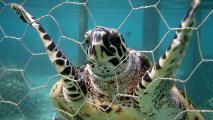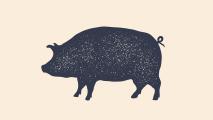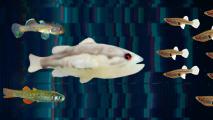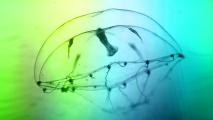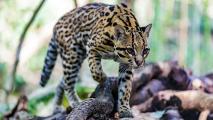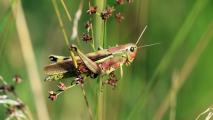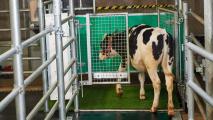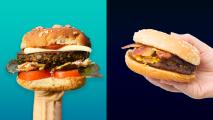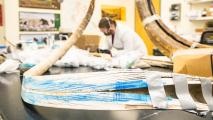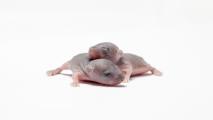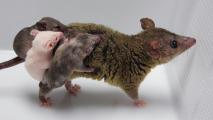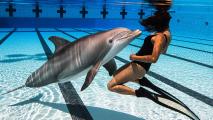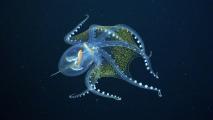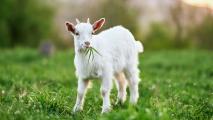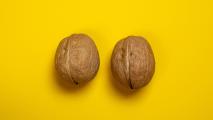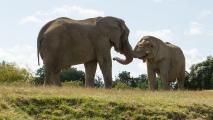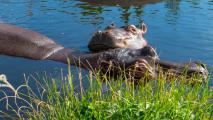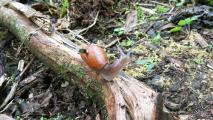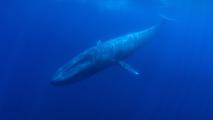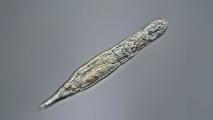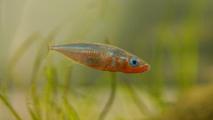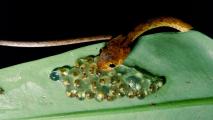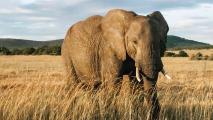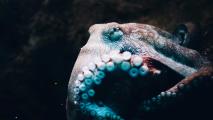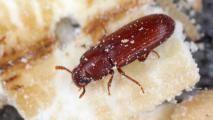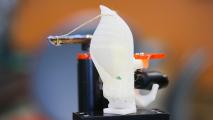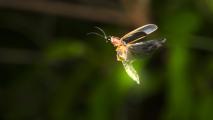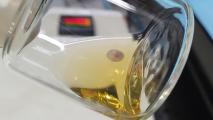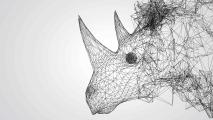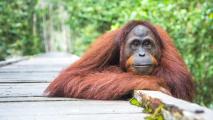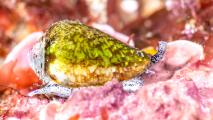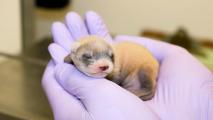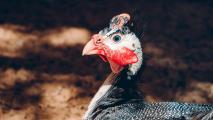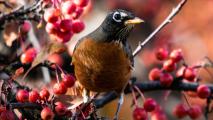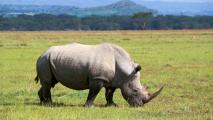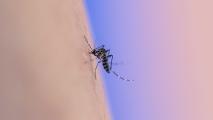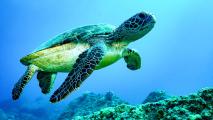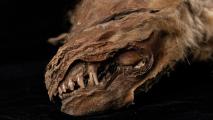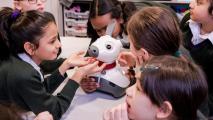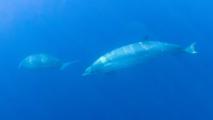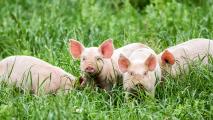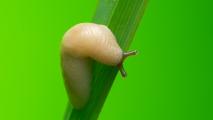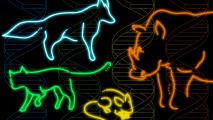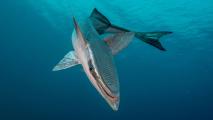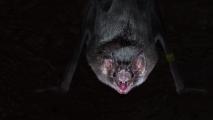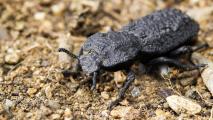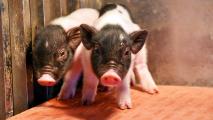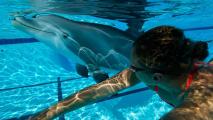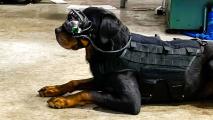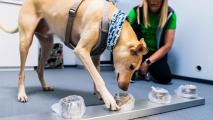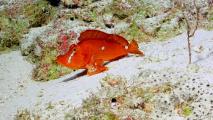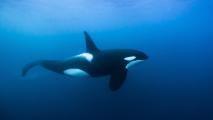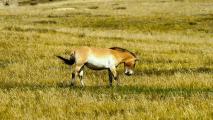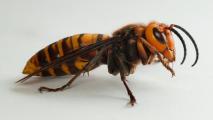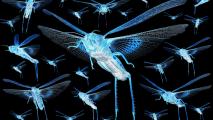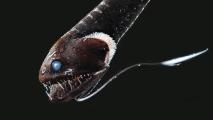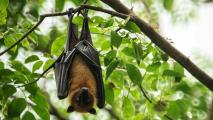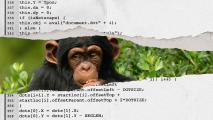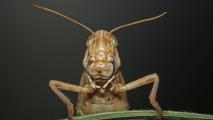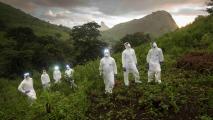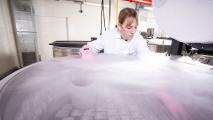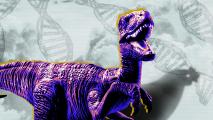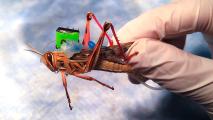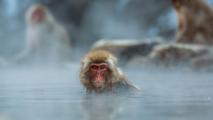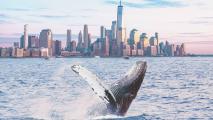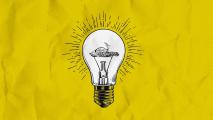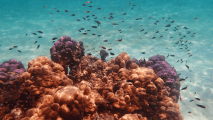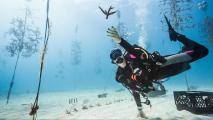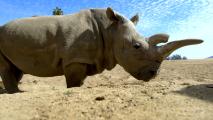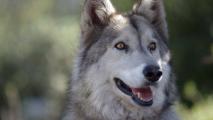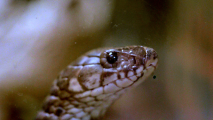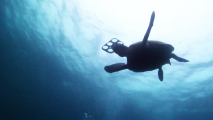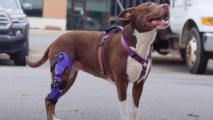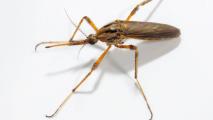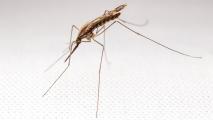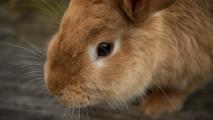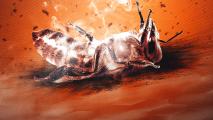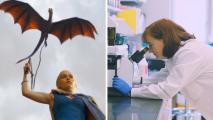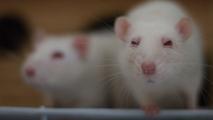Field: Animals
Green lights reduce bycatch in fishing nets by 63%
Adding green LEDs to gillnets can reduce bycatch of sharks, turtles, and other animals without affecting the catch of desired species.
Pig kidneys transplanted into body of brain-dead man
A brain-dead man was the recipient of two pig kidneys — a groundbreaking transplant that could help bring the organ shortage to an end.
Beet juice “blood” is a potent way to kill mosquitoes
Molecular Attraction plans to kill mosquitoes transmitting malaria by tricking them into drinking beet juice “blood” laced with toxins.
Surgeons transplant pig heart into Maryland man
A pig heart is now beating in the chest of a man in Maryland, marking a huge step forward for xenotransplantation research.
Using robotic fish to harness the “ecology of fear”
To fight an invasive fish threatening Australia’s critically endangered freshwater natives, researchers are looking to robotic predators — and the “ecology of fear” they create.
What the ancient, alien jellyfish can tell us about the human brain
The jellyfish nervous system, revealed by glowing genes, may help unlock the secrets of how our own brain evolved.
Can artificial insemination save the ocelot?
There are fewer than 80 ocelots known to exist in the wild in the U.S. Can artificial insemination save the species?
Citizen keepers are raising threatened grasshoppers
The large marsh grasshopper risks extinction. But volunteer citizen keepers are raising the insect for rewilding to newly restored wetlands.
Scientists toilet-train cows to reduce air pollution
To combat the negative environmental impact of cow urine, researchers have proven it's possible to potty-train calves.
Series|
Challengers
The plant-based startup taking on food giants
Kelp is a superfood that’s grown totally sustainable. But will people be willing to replace burgers with seaweed?
Cultured meat for pets is about to hit store shelves
Biotech startup Because, Animals is creating cultured meat for pets, using mouse cells to grow the meat found in its new cat treat.
Clues in woolly mammoth tusk reveal a lifetime of travels
Researchers have reconstructed the life of a woolly mammoth that lived more than 17,000 years ago by deciphering clues hidden in his tusk.
Baby mice “dream” about the world before seeing it
Before the eyes of baby mice open, their brains appear to use retinal waves to prep their vision systems to detect objects and motion.
FDA approves first drug to treat lymphoma in dogs
The FDA has approved a medication specifically designed to treat lymphoma in dogs, potentially helping extend the lives of thousands of pets.
Lab-grown foie gras eliminates force-feeding
Gourmey is developing lab-grown foie gras, using stem cells to produce the delicacy without subjecting birds to the practice of gavage.
CRISPR used to create first gene-edited opossums
CRISPR technology has been used to create gene-edited opossums, a breakthrough that could have huge implications for medical research.
Series|
Just Might Work
How robots could end animal captivity in zoos and marine parks
Could robotic dolphins help marine parks become more humane spaces where people can learn about and connect with nature?
Rarely seen glass octopus caught on film
An underwater robot has recorded stunning footage of a glass octopus, an almost completely transparent cephalopod rarely caught on film.
Goats are helping California battle wildfires
By having goats eat the dry vegetation that fuels wildfires, Californians can prevent the blazes from spreading into populated areas.
Castration linked to younger DNA and biological age
A study measuring biological age in castrated sheep has yielded a discovery that could inform anti-aging research for people.
Should a herd of captive elephants be released into the wild?
Animal conservationists plan to attempt the largest elephant rewilding ever, flying an entire herd from a U.K. zoo to Kenya to be released.
Hippos in tracking study unexpectedly contract anthrax
A study into the movement of hippos led to new research on anthrax outbreaks when some of the animals wearing GPS trackers contracted the disease.
Snails wearing smallest computer solve extinction mystery
The world’s smallest computer was used to figure out why one species of snail survived a situation that pushed more than 50 others into extinction.
Bomb detectors record rare pygmy blue whales singing
Underwater microphones used to listen for signs of nuclear bomb testing have captured the singing of a population of rare pygmy blue whales.
Microscopic animals revived after 24,000 years in permafrost
A multicellular animal called the bdelloid rotifer has used cryptobiosis to survive in the Siberian permafrost for at least 24,000 years.
Genes show which animals will adapt to climate change
Some fish, such as the threespine stickleback, can respond to dramatic seasonal changes very quickly — genome sequencing reveals why.
Birds, frogs, and reptiles use sound to “program” embryos
Sound appears to play a larger role in animal development than previously thought, affecting how a variety of species prepare for life outside the womb or egg.
Old dogs are helping scientists combat human aging
By studying donated tissues stored in a pet dog biobank, researchers have uncovered a genetic link between brain aging in canines and humans.
This app is saving elephants from poachers
Elephant poaching is running wild in Africa. But, with the help of a smartphone app, Kenya is reviving the population.
"Octopus vision" may help prevent human blindness
A new medical device that gives optometrists a fast, easy way to monitor a key macular degeneration risk factor was inspired by octopus vision.
Is death by pee our next pesticide?
It may not be your number one idea, but having beetles pee themselves to death could be the next pesticide.
Bat-inspired sound location tech could allow drones to fly solo
Inspired by bat’s ears, researchers at Virginia Tech have created a device capable of pinpointing sound location more accurately than other tech — or our ears.
Fireflies may use “musical armor” to keep bats at bay
Fireflies’ primary aposematic signal that they’re poisonous may not be visible to bats, so the bugs appear to have a second, sound-based warning sign.
Researchers have grown a mouse embryo in a bottle
Researchers have grown a mouse embryo outside the uterus for longer than ever before, opening up the door to learning more about how mammals grow.
Now you can save endangered species — just by playing games
A new smartphone game will allow players to adopt an endangered animal in the digital world while simultaneously protecting one in the real world.
Great apes get vaccinated against COVID-19
Great apes, our closest living relatives, are susceptible to COVID-19. The San Diego Zoo has given some an experimental vaccine to protect them.
Cone snail venom may help treat malaria
Clumps of infected red blood cells can make malaria dangerous even after its parasite is treated. Cone snail venom may one day help.
Black-footed ferret is first cloned US endangered species
A black-footed ferret clone could inject a much-needed dose of genetic diversity into her species, which is on the brink of extinction.
Gators and guineafowl may help us understand how dinosaurs moved
Using x-ray 3D-imaging techniques, researchers are turning to gators and guineafowl to better understand how dinosaurs moved.
3D-printed halo helps dog adjust to life without eyesight
The owner of a blind dog named Sienna used 3D printing to custom-build a device that would stop the diminutive Pomeranian from running into walls.
AI can find endangered elephants from space
A breakthrough technology uses artificial intelligence to track large animals from space, even in complex terrain.
Predicting which birds can cause Lyme disease spread
Lyme disease spreads via infected ticks, some of whom pick it up from birds. But which birds may carry the disease to new places?
Can science save the northern white rhino?
The northern white rhino species is down to just two members, both female. Can science bring it back from the brink of extinction?
New discovery could stop dengue’s “breakbone” fever
Making a dengue vaccine is difficult. It’s early, but a new antibody that targets a protein the virus makes instead of the virus itself may be a solution.
Scientists observe cells reacting to a magnetic field for the first time
Scientists aren’t sure how animals sense magnetic fields — magnetoreception. New observations of living cells reacting to magnetic fields may hold a clue.
Scientists put bees in little reflective “vests” for bee tracking
Bee tracking is difficult and expensive, and smaller bees are left out. Lightweight, inexpensive tags may be a solution.
Ice Age wolf mummy discovered almost 100% intact
An almost perfectly preserved wolf mummy discovered in the Canadian tundra is giving researchers a glimpse into the life of an ancient wolf.
We need a better way to track polar bears. This father and son found a way.
A father-son duo has teamed up to develop four different temporary tracking devices being tested by polar bears in the far North.
The best therapy dog may be a robot
A life-life robot dog might be an effective — or even preferable — alternative to a living therapy dog, according to a new study.
Environmental DNA may prove the discovery of a new kind of whale
Researchers have found what they believe to be a new species of beaked whale. Environmental DNA will be used to prove it.
Genetically modified pigs get green light from FDA
The FDA has approved Revivicor’s genetically engineered GalSafe pigs for use as food or medical products — a first for genetically modified animals.
Nematode worm could liquify slugs for US farmers
A parasitic nematode used in Europe to kill slugs was just discovered in Oregon, supporting calls to have its use for pest-control approved Stateside.
This databank of mammalian genomes is the Noah’s Ark of DNA
The Zoonomia Project is the largest database of mammalian genomes to date, and it’s already helping researchers study SARS-CoV-2 and extinction risk.
We finally have footage of remoras, the ocean's hitchhikers, in action
Using never-before-seen footage, researchers are learning more about how the remora moves around its hosts.
Vampire bats social distance when sick, and so should you
Vampire bats are incredibly social creatures, living in colonies which can be massive. New research suggests that when they feel sick, they socially distance.
If you train robots like dogs, they learn faster
The dog-inspired SPOT framework effectively trains an AI robot more quickly than other reinforcement learning methods.
The "Iron Man" of beetles could inspire super-durable cars and planes
The diabolical ironclad beetle could be the next big thing in biomimicry, inspiring the design of extra-durable planes, cars, and more.
These gene-edited pigs could help end organ shortages
These gene-edited pigs have organs designed to be more compatible with the human body, bringing xenotransplantation one step closer to reality.
New bug spray "crystals" can help wipe out malaria
Crystalizing a common insecticide makes it kill mosquitoes faster, and could be a cheap, effective new weapon for malaria prevention.
This robot dolphin could free animals from captivity
This robot dolphin could replace the real ones forced to entertain people at marine park exhibits across the globe.
Military dogs may soon sport AR goggles in enemy territory
Military dogs will don augmented reality goggles to test their ability to keep soldiers safe by allowing them to direct the dogs from afar.
Dogs that can smell coronavirus screen travelers at airport
Detection dogs that can smell coronavirus in a person’s sweat are now screening travelers for COVID-19 at Helsinki Airport.
Undescribed deep sea creatures discovered in the great barrier reef
Researchers discovered undescribed deep sea creatures, spotted rare fish, and gathered geological samples from the deepest part of the Great Barrier Reef.
Google built a neural network to warn ships of whales. will it help?
Google introduced an artificial neural network that can locate whales in the ocean. They want to use it to keep the animals safe from ships.
Scientists use 40-year-old DNA to clone endangered horse
The first cloned Przewalski’s horse could inject the critically endangered species with a much-need dose of genetic diversity.
The murder hornet’s genome may help stop the invasion
The Asian giant hornet has invaded the Pacific Northwest. Researchers hope a map of the murder hornet’s genome can help their hunt for them.
Scientists have found the locust swarm pheromone
A locust swarm is flying famine, devouring millions of pounds of crops. Researchers have found the swarming trigger — and perhaps an answer to stopping it.
These ultra-black deep-sea fish absorb over 99% of light
Researchers have discovered ultra-black deep-sea fish that can absorb over 99% of light. Their skin may hold secrets to creating new ultra-dark materials.
Bats may provide clues for treating COVID-19
Bats have long lives despite playing host to numerous viruses. Three scientists believe bats' immune systems may help develop new ways of treating COVID-19.
Crowdsourcing ideas for animal conservation technology
The Digital Makerspace looks to an online community of thinkers to identify the most crucial animal conservation problems and solutions.
Battling a locust swarm from space
Using data from NASA satellites, researchers are scouring East Africa for areas where a desert locust swarm might be born — so they can destroy the eggs.
Secrets of the Dead Sea Scrolls may be in animal DNA
Scholars' understanding of the Dead Sea Scrolls may be enhanced by an unusual source: the DNA of the animals they’re printed on.
Tracking animals from the International Space Station
The ICARUS project looks to use the International Space Station and special bio-loggers to begin tracking animals from space.
Bats are not the enemy
Researchers are developing options from the domestic to the deific to allow humans and bats to live together in...
Hunting zoonotic diseases before an outbreak
Stopping zoonotic diseases — and pandemics — may require studying not just viruses, but also animals, habitats, and people.
Researchers are rushing to freeze… lab mice sperm?
With their labs closing and the future unclear, researchers are sending precious cargo — the sperm of lab mice — to be frozen and stored.
Should we turn chickens into dinosaurs?
These scientists are studying chickens to learn more about dinosaur DNA, and their findings could help us better understand our own genetic code.
Scientists engineered “cyborg grasshoppers” to sniff out bombs
By implanting electrodes into the brains of grasshoppers, scientists were able to harness the insects’ sense of smell for the purpose of explosive detection.
Stimulating monkeys’ brains snaps them out of unconsciousness
Researchers found that they could induce a state of consciousness in an unconscious monkey by electrically stimulating a specific part of the animal’s brain.
NYC's whale population is making a comeback – here’s why.
The once struggling New York Harbor whale population is now rebounding with water clean-up initiatives and these faithful citizen scientists’ efforts.
The dark toll of light pollution
Bird populations are paying the price for our electric lights. These volunteers are working to change that.
Sifting through sound: using soundscapes to understand ecosystem health
“Ecoacoustics” is an emerging field of research. Instead of chasing down isolated animal sounds, researchers are using all of the acoustic properties of a location to answer ecological questions.
What dinosaur poop tells us about ancient life
Coprolite, aka dinosaur poop, is giving scientists a surprising glimpse into the world of the dinosaurs. Learn what industry leader Karen Chin has been learning from dino dung.
Researchers found a species of stony coral ready to withstand climate change
At current trends, more than 90% of the world’s coral reefs will be massively degraded by 2050. Researchers have found a species of stoney coral that has sparked new efforts for coral reef restoration.
Series|
Seachange
How to save the coral reefs
Coral reefs are the foundation of ocean life, and yet 50% of them have been lost. Here’s why coral reefs are dying and what one group is doing to stop it.
Reversing extinction for the northern white rhino
The Northern white rhino is functionally extinct, meaning the two living females of the species are infertile. This scientist from the San Diego Zoo may have the solution to save the last of this extinct species, by tapping into her frozen zoo.
What wolves can teach us about human connection
Wolves are not often thought of as therapy animals, but Wolf Connections is changing that perception while helping young people in the process.
A dangerous job: Snake milkers risk their lives to save others
A very small number of very daring people are responsible for all of the world’s antivenom.
The snake milk king
Enter the Kentucky Reptile Zoo—one of the largest collections of venomous reptiles in the world—and meet Jim Harrison, the man that spent his 42-year career milking King Cobras for anti-venom and saving lives across the globe. What drives a man like this to risk his life each and every day?
The edible six pack ring that's saving marine animals
18 billion pounds of plastic are dumped in the ocean every year. This microbrewery created biodegradable six pack rings to help stem the tide.
Giving animals new legs
Derrick Campana is a prosthetics engineer helping animals walk again with artificial limbs.
What's the deal with the giant mosquitoes after hurricanes?
These suckers grow to be three times larger than other mosquitoes, but they may not be as bad as you think.
GMO mosquitoes could be our best new weapon against disease
It sounds like science fiction, but it could save millions of lives.
AI could replace chemical testing on animals
Scientists have developed software that could save one billion dollars (and two million animals) each year.
Series|
Wrong
What happened to the beepocalypse?
In 2006 bees started disappearing. Beekeepers reported to losing up to 90% of their beehives. And no one knew why....
This week in ideas: Saying goodbye to lab rats and replacing bees with drones
Breakthrough could mean the end of test animals, violent crime nearly cut in half, and drones that pollinate flowers.
